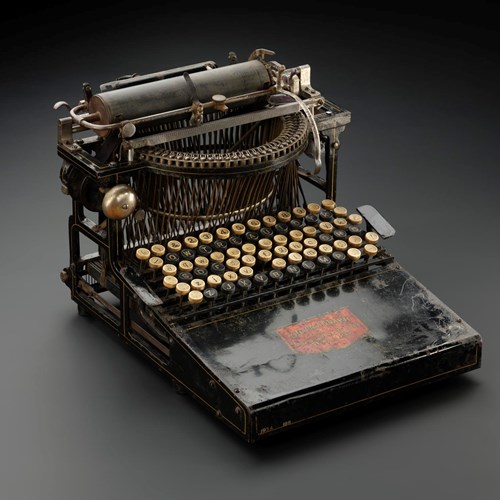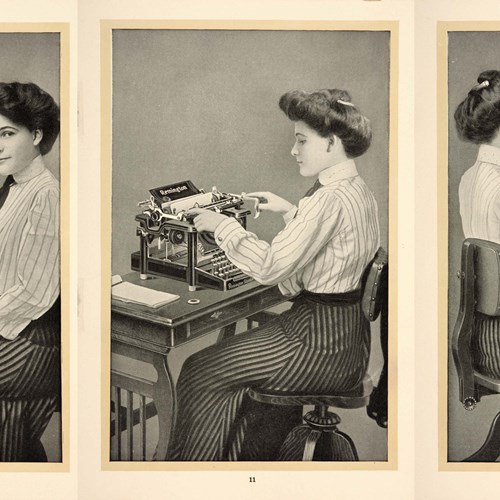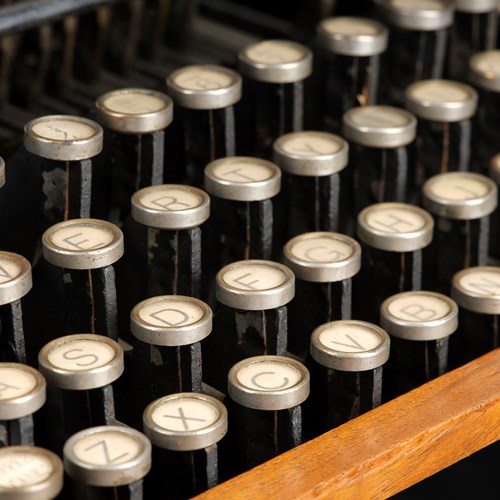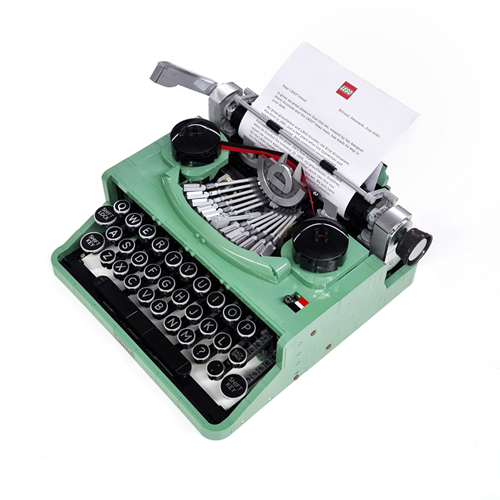The Typewriter Revolution
24 Jul 2021 - 11 Sep 2022
10:00 - 16:30
Exhibition Gallery 2, Level 3
Free entry
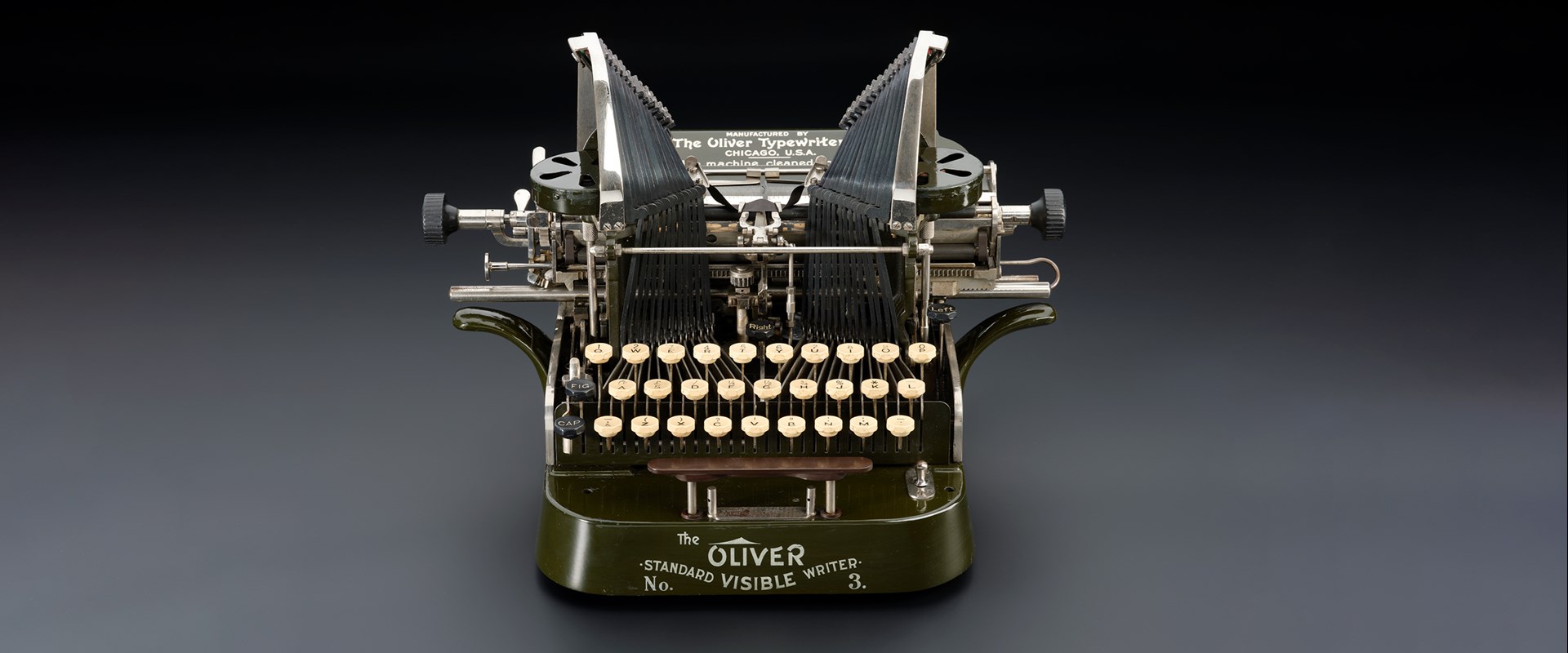
Oliver typewriter No. 3, serial number 87355, by the Oliver Typewriter. c.1902 - 1906 (T.1959.39).
Oliver typewriter No. 3, serial number 87355, by the Oliver Typewriter. c.1902 - 1906 (T.1959.39).
The typewriter not only revolutionised offices, but also transformed the world of work - especially for women. This exhibition explored how these remarkable machines have helped to influence both society and technology, and why they are still popular today.
Writing a new chapter
The impact of the typewriter has been much wider than simply speeding up the way we write. It helped revolutionise the world of work and change the lives of working women in particular. Typewriters helped them launch their own businesses at a time when female employers were rare and became a vital weapon in the fight for the vote.
The typewriter's social and technological influence is revealed in this new exhibition and looks at its role in society, arts and popular culture. It traces the effect and evolution of typewriters across more than 100 years, from weighty early machines to modern style icons. And despite being erased from many offices by the rise of computers, the typewriter has remained a beloved design icon that is still in use today.
Tap into typewriters
Drawing on our outstanding typewriter collection, the exhibition features a range of machines, including an 1876 Sholes and Glidden typewriter which was the first to have a QWERTY keyboard; a 1950s electric machine used by Whisky Galore author Sir Compton Mackenzie; and the 1970s design icon, the Olivetti Valentine.
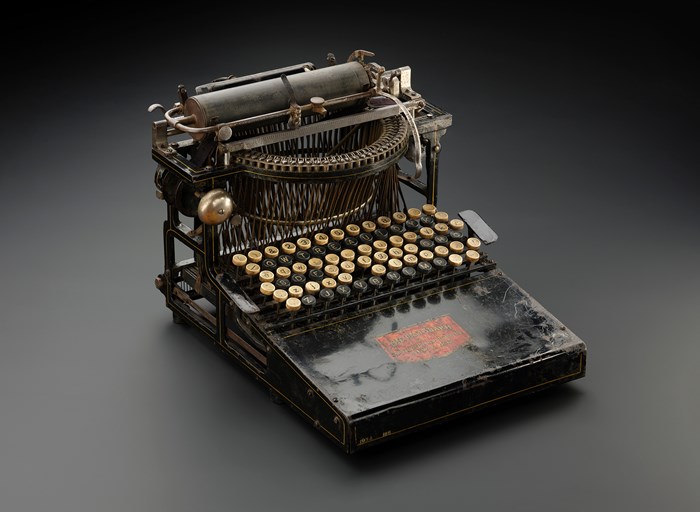
A Caligraph No. 4 typewriter, by the American Writing Machine Co, New York, 1895 - 1900 (T.1934.188).
The Caligraph typewriter was the first major competitor to Remington typewriters. Instead of a shift key, from 1882 Caligraphs featured a full keyboard with separate keys for lower-case, upper-case, numbers and special characters. Caligraph typewriters were imported into Scotland by John J Deas.
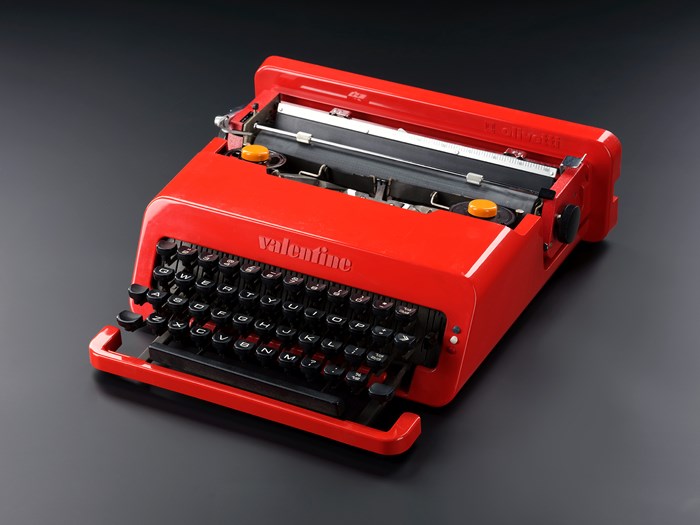
Olivetti Valentine typewriter manufactured in Barcelona, Spain, c. 1970 (T.1989.15.1).
Designed by Italian architect Ettore Sottsass and British designer Perry King, this machine was marketed as a stylish accessory and was far removed from office culture. While its high price tag meant that it was not a commercial success, today it is highly prized by collectors.
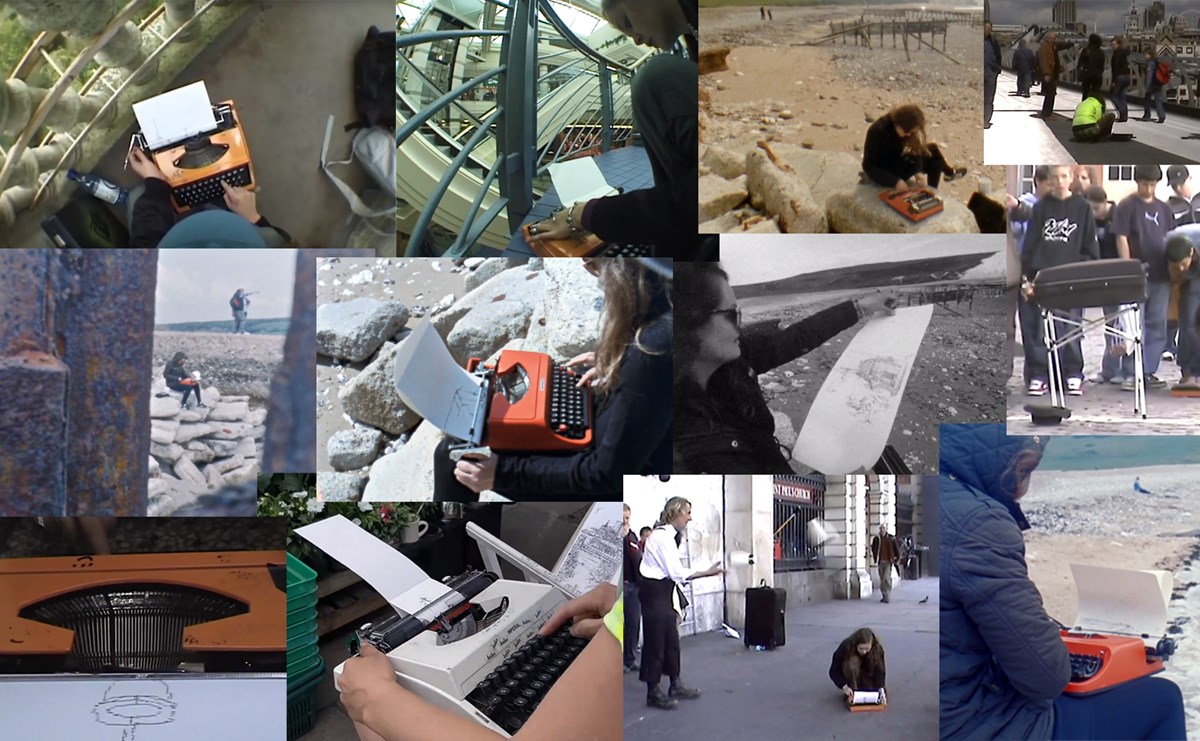
Typewriter Artist Keira Rathbone
Keira draws images from life using her typewriter, instinctively translating what she sees around her into beautiful, enigmatic images. In this film, Keira discusses how she became a typewriter artist, what inspires her and how she creates typewriter art.
Typewriter Artist Keira Rathbone“[The typewriter] will, in course of time, do for the ink-bottle and the pen, what the sewing machine has already done for the needle.- John J Deas, 1884
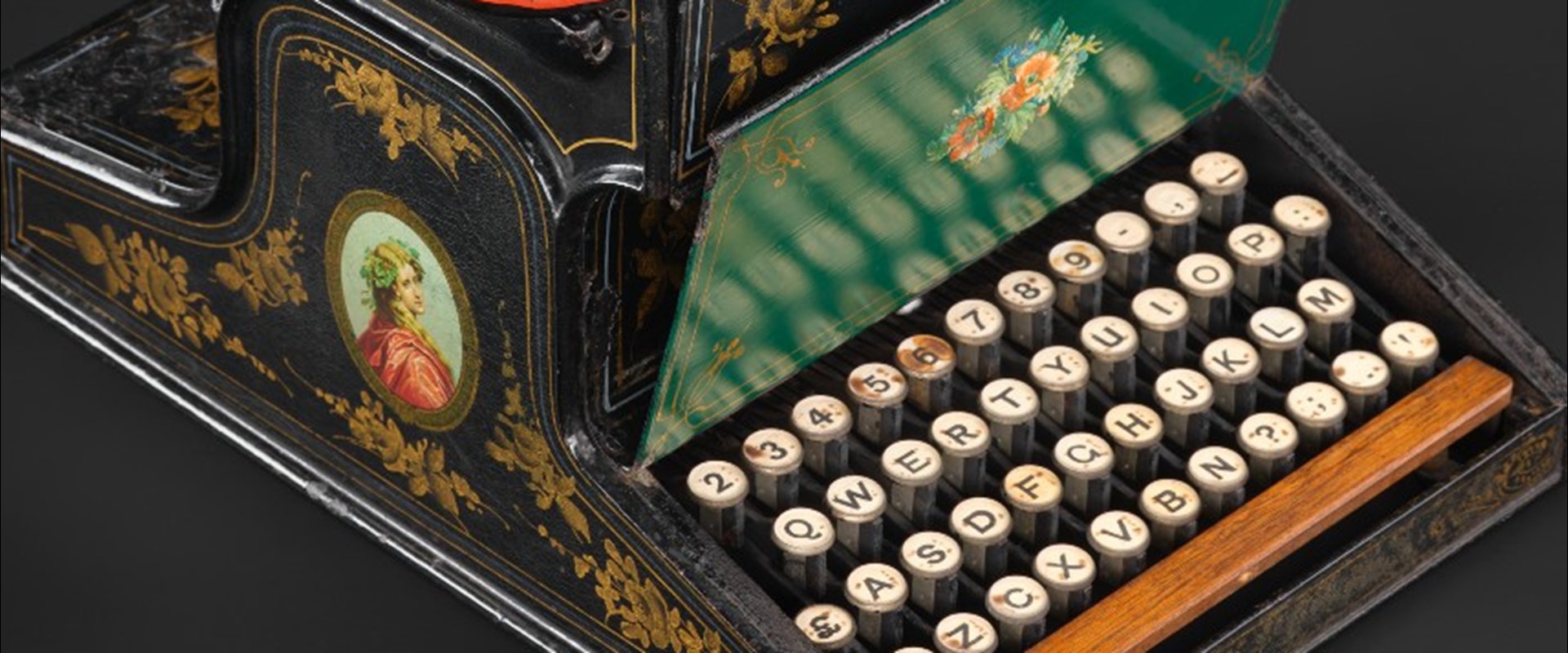
Detail from a Sholes and Glidden typewriter manufactured by Remington in 1876. (T.1904.304).
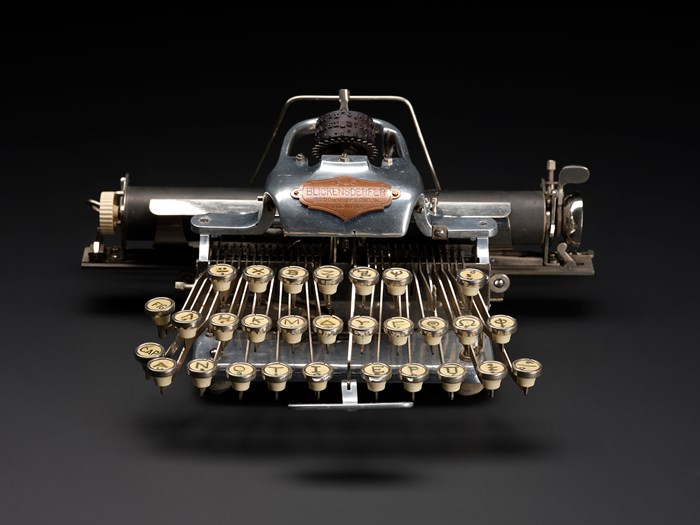
Blickensderfer No. 5 typewriter. Manufactured in Stamford, Connecticut, c. 1898 - 1909 (T.1963.69.1).
Released in 1894, the Blickensderfer No 5 was one of the first portable typewriters with a keyboard. This example – which has been adapted to type in Greek – was owned by Arthur Beattie, Professor of Greek at the University of Edinburgh.
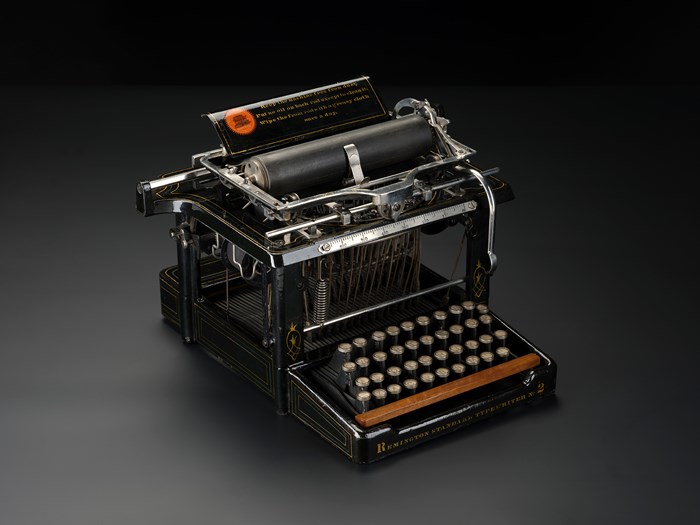
Remington No. 2 typewriter, manufactured 1887 - 1888 (T.1960.34).
Released in 1878, the Standard No 2 featured several improvements on Remington’s first typewriter model, the Sholes & Glidden. Most important was the shift key which allowed the typist to swap between lower- and upper-case letters.
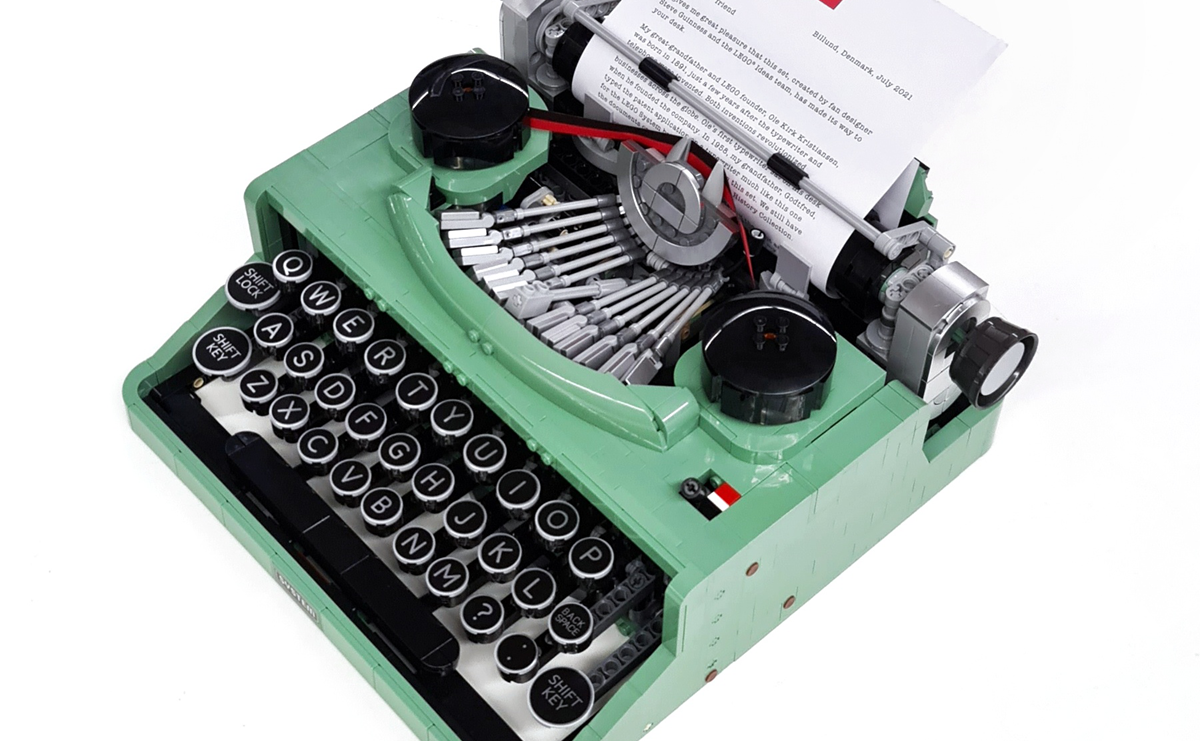
How do you design a LEGO typewriter?
How long does it take to build? How close is it to the real thing?
LEGO designer James May describes how this set was brought to life and what it’s like to work at LEGO.
From early machines to modern style icons
Discover over 100 years of typewriters in our collection.
Explore here#TypewriterRevolution
Share your highlights on social media.
Plan your visit to National Museum of Scotland.
National Museum of Scotland
Chambers Street
Edinburgh
EH1 1JF
We want everyone who comes to our museums to enjoy their time with us and make the most of their visit.
- There is level access to the Museum via the main doors to the Entrance Hall on Chambers Street and the Tower entrance at the corner of Chambers Street and George IV Bridge.
- Lifts are available to all floors and accessible toilets are available on most floors, as well as a Changing Places (U) toilet in the Entrance Hall on Level 0.
- There is an induction loop in the Auditorium.
- Guide dogs, hearing dogs and other recognised assistance dogs are admitted.
Find out more about our access information.
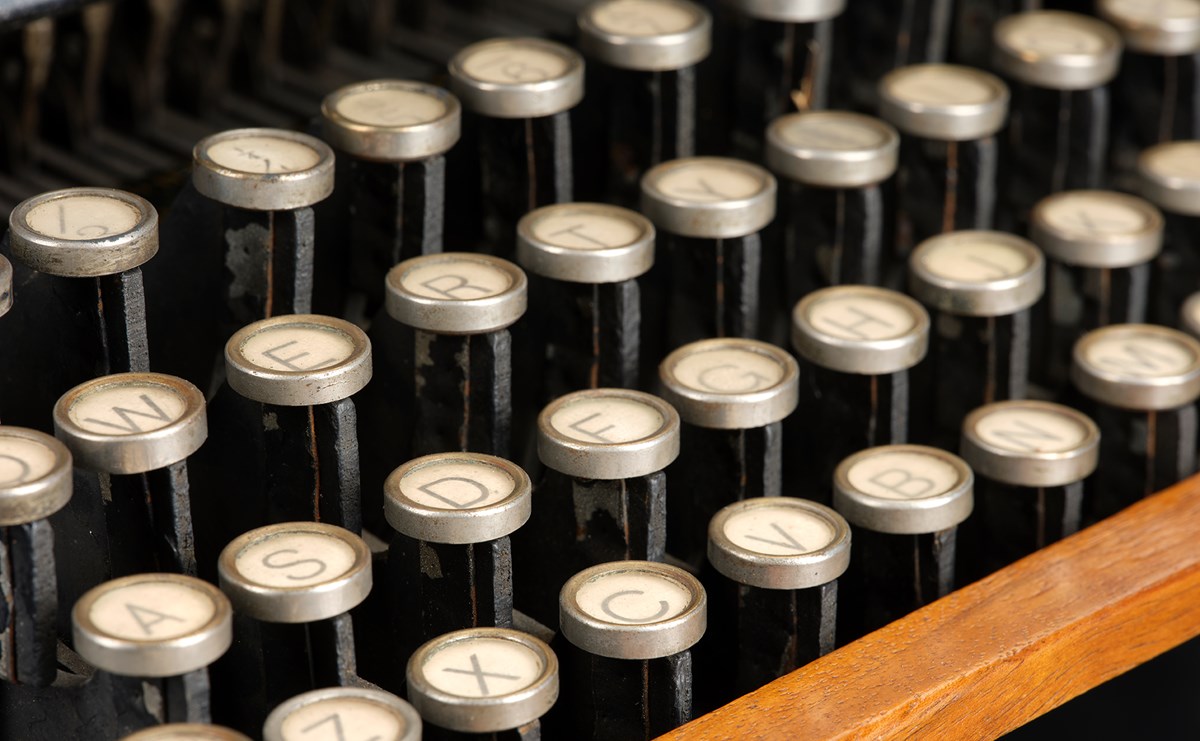
History of the typewriter
The typewriter not only revolutionised offices, but also transformed the world of work, especially for women. But the impact of these machines has been much wider than just speeding up the way we write.
Header image: Oliver typewriter No. 3, serial number 87355, by the Oliver Typewriter. c.1902 - 1906 (T.1959.39).

